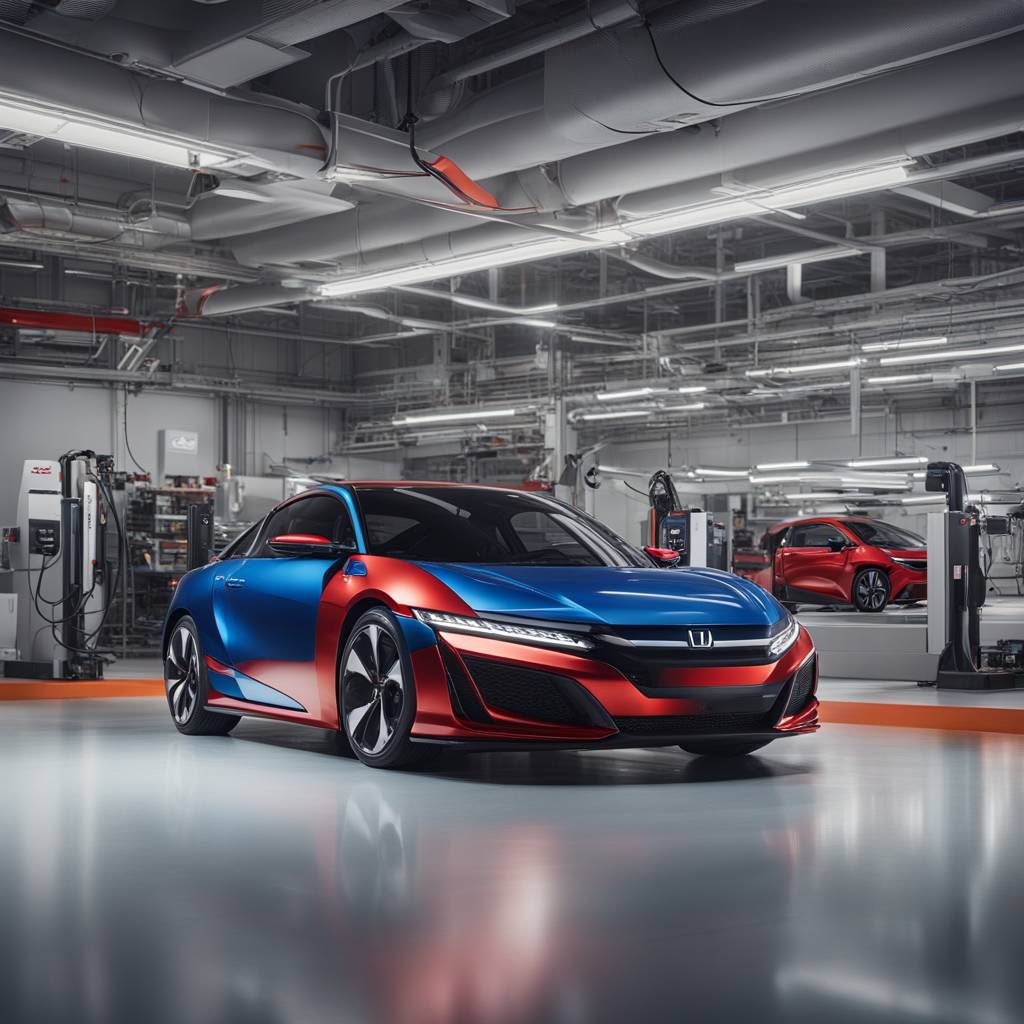Summary
– Honda to expand manufacturing presence in Canada with $11 billion investment
– New plants in Alliston, Ontario to focus on electric vehicles and battery components
– Honda aims to achieve net zero CO2 emissions by 2050
– New EV plant to have output of 240,000 vehicles per year and battery plant to produce 36 gigawatt-hours of EV batteries annually
– Honda plans to introduce at least two new models by 2028, with first being a small Honda-badged electric crossover in 2027
Article
With the rising demand for electric vehicles, Honda has announced its plans to expand its manufacturing presence in Canada to produce electric vehicles. The Japanese automaker’s massive $11 billion investment in new plants near its existing manufacturing campus in Alliston, Ontario is set to begin electric vehicle production in 2027. The investment will include the construction of four new manufacturing plants – one for EVs, one for battery packs, and two plants for battery components. The goal is to create a complete local EV supply chain that will enable Honda to build electric vehicles at a competitive price and with a lower environmental impact.
Despite lagging behind other manufacturers in terms of electric vehicle offerings, Honda is taking a bold step towards electrification with its plans for an EV assembly plant and battery plant in Canada. The new EV assembly plant is projected to have an output of 240,000 vehicles per year, while the battery plant will be capable of producing 36 gigawatt-hours of EV batteries annually. Honda’s investment is expected to create 1,000 new jobs on top of the 4,200 people already employed by the company in Canada. The automaker currently builds popular models such as the CR-V and Civic in Canada, with plans to introduce at least two new models by 2028.
Honda’s new lineup of electric vehicles will be underpinned by a new bespoke EV architecture, with the first models expected to hit the market in 2027. The automaker showcased a series of concepts in January that will serve as inspiration for its production models. The Saloon concept, which resembles a small handheld vacuum cleaner, will inspire the production EV called the Honda 0. This will be Honda’s first “next-generation” EV, with its design likely influencing future models, including the crossover set to enter production in Ontario in 2027. In addition to its Canadian expansion, Honda plans to turn its Ohio manufacturing facilities in the US into an “EV hub” to start electric vehicle production in 2025.
Honda’s move towards electric vehicle production in Canada represents the automaker’s commitment to sustainability and reducing environmental impact. By establishing a complete local supply chain for EVs, Honda aims to achieve net zero CO2 emissions by 2050, with plans to only produce EVs and FCEVs after 2040. The massive $11 billion investment marks the largest single automotive investment in Canada’s history, signaling a significant milestone for Honda in its transition to electric vehicles. With the construction of new manufacturing plants and the addition of new models to its lineup, Honda is poised to make a strong impact in the electric vehicle market in the coming years.
Overall, Honda’s ambitious plans for electric vehicle production in Canada demonstrate its dedication to innovation and sustainability in the automotive industry. With a focus on creating a complete local supply chain for EVs and expanding its manufacturing presence in Ontario, Honda is making significant strides towards achieving its goal of net zero CO2 emissions by 2050. By investing in new plants and creating new job opportunities, Honda is not only contributing to the growth of the electric vehicle market but also playing a key role in shaping the future of sustainable transportation. As Honda continues to roll out its new lineup of electric vehicles and expand its production capabilities, it is positioning itself as a leader in the global shift towards electrification in the automotive industry.
Read the full article here



